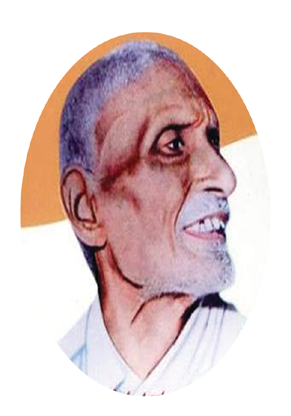On India’s 75th year of Independence, who do we thank? It is Pingali Venkayya (2 August 1876 – 4 July 1963), who designed the Swaraj Flag, later modified into the Tricolour Flag of India. He painted India with the vibrant colours of saffron, white and green on the canvas of courage, sacrifice, patriotism, and renunciation.
Multi-faceted Pingali was a lecturer, author, geologist, educationalist, agriculturist, polyglot, teacher, linguist, freedom fighter, staunch Gandhian and devoted Congress party member.
Born into a Telugu Brahmin family in Bhatlapenumarru, now in AP after high school in Madras, he graduated from the University of Cambridge, England. A polymath, his specific interests included geology, education, agriculture and languages. He earned a diploma in Geology from the Madras Presidency College, authored a book titled Thalli Raayi on geology, was a lecturer at the Andhra National College, Machilipatnam, researched on mica in Nellore, and established an institute in Machilipatnam.
Venkayya served as a soldier aged 19 in the British Army in South Africa (1899 -1902) during the Second Anglo Boer war. The British soldiers saluting their Union Jack made him realise that his country had no such symbol to identify with. It inspired him to design the national flag for India. He met Mahatma Gandhi in Africa and the association lasted more than 50 years. His life and contribution though are scarcely documented.
At the 1906 AICC session in then Calcutta, he was inspired to design a flag as he opposed the idea of hoisting the British flag at Congress meetings. In 1916, Venkayya published a book titled ‘Bharatha Desaniki Oka Jatiya Patakam’ (A National Flag for India) with 30 potential designs for our own National Flag and continued his detailed research.
In 1921, at the AICC session in Bezwada (now Vijayawada), Venkayya met Gandhiji and showed him his publication. Gandhi asked him to design a fresh flag and was presented with a rudimentary design of the first flag on a khadi bunting, within three hours.
Coloured red and green, the red representing Hindus and green representing Muslims, the flag was called the Swaraj flag. On Gandhi’s suggestion, Venkayya added a white band in the middle, representing all the other denominations and religions. It was approved and used informally at all Congress meetings.
In 1931 concerns arose about religious aspects and a Flag Committee was set up with a new idea, Purna Swaraj. The red was replaced with saffron. The order changed, with saffron on top followed by white and then green colours represented qualities and not communities; the saffron for courage and sacrifice, white for truth and peace, and green for faith and strength. The white band symbolised peace and harmony between the communities. The charka placed on the white band in the middle represented the progress and self-reliance of the nation and for the welfare of the masses.
The National Flag adopted by the Constituent Assembly of India on July 22, 1947 became the symbol of the independence movement. On 15 August 1947, the Tricolour became the national flag with minor changes like a 24-spoked navy-blue Ashoka Chakra replacing the spinning wheel in the centre. While the flag went through many changes, its basic structure is attributed to Venkayya.
Venkayya earned many nicknames in one lifetime. Jhanda Venkayya for his part in designing the flag. A passionate gemologist, he was called Diamond Venkayya. A polyglot who was proficient in many Indian languages including Japanese and Urdu, he was referred to as Japan Venkayya.
Pingali Venkayya died in Vijayawada aged 86, penniless, forgotten by society and the Congress party. His last wish was to be covered in the Tricolour national flag that he had designed.

